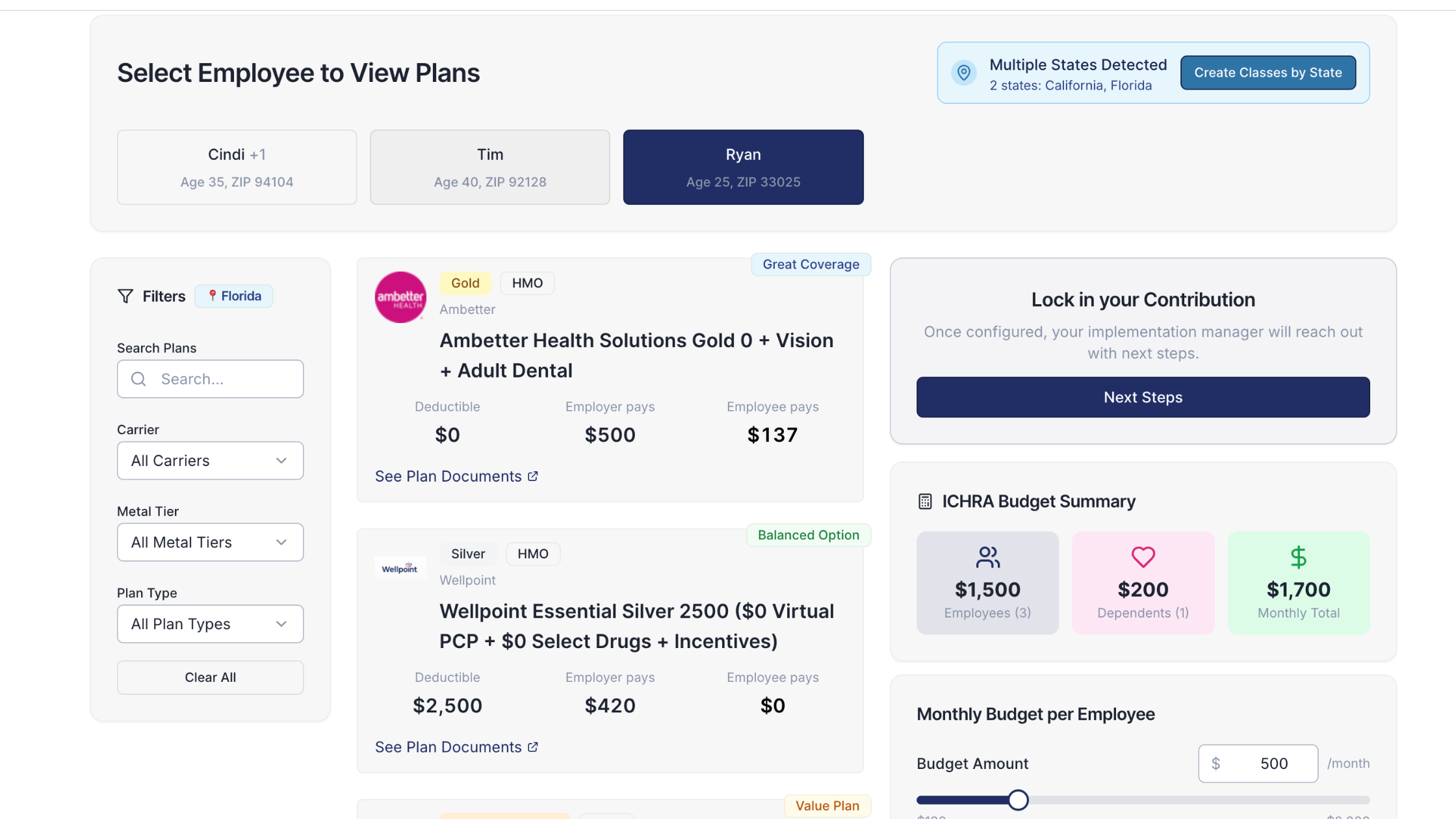How Can Audit Trails Improve Transparency in Health Benefit Spending?

Transparent health benefit spending starts with proof: clear, chronological evidence of who did what, when, where, and why. That’s exactly what audit trails provide, and it’s why health benefits audit trail compliance is now a core requirement for any modern benefits program. When your platform can track every step of a reimbursement, eligibility decision, or premium payment, spending transparency tracking stops being a buzzword and becomes a daily reality. For employers and brokers who need to meet audit documentation requirements under the Employee Retirement Income Security Act (ERISA) while also controlling costs, strong audit trails turn compliance into an efficient and repeatable process, not a year-end scramble.
Why Transparency In Health Benefit Spending Still Feels Hard
Health benefit dollars move through many hands: HR, payroll, brokers, administrators, carriers, and employees. Every handoff adds risk. Without timely, audit-ready logs, you’re left with gaps that make it tough to answer basic questions: Was the employee eligible on the date of service? Was a receipt substantiated? Who approved the exception? Lacking an audit trail, transparency becomes a manual reconstruction exercise that burns time and increases audit exposure.
Audit trails change that by creating a verifiable system of record, capturing who accessed, added, changed, approved, or paid what, and when it happened. In practical terms, they improve security, accountability, and regulatory readiness while also making day-to-day administration smoother and more predictable.
What “Audit Trail” Means In Benefits Administration
An audit trail is a chronological log of actions that shows what happened, who did it, when it occurred, where it originated, and, ideally, why it was done. Think of it as a tamper-evident ledger of every important event in your benefits system: eligibility updates, stipend changes, plan selections, reimbursement approvals, document uploads, and payments. In healthcare contexts, audit trails are a proven method for tracking access and changes to sensitive data, and the same safeguards apply to benefits operations: they uphold accountability, deter misuse, and provide clear evidence during reviews.
How Audit Trails Improve Transparency In Health Benefit Spending
Audit trails are not just a compliance checkbox. They actively raise the signal-to-noise ratio in your data, giving finance, HR, and brokers a shared source of truth. Here’s how they make benefits spending transparency tracking measurable and real.
Visibility On Every Dollar
When each reimbursement, premium reimbursement, or administrative fee is logged with user, timestamp, and action type, spending patterns become much easier to analyze. Finance teams can trace variances to their root cause, instead of relying on snapshots or exports. For brokers, this makes trend reporting and renewal strategy stronger, faster, and backed by evidence, not guesswork.
Compliance Without The Paper Chase
Regulated programs live and die by documentation. Robust audit trails create a structured, time-stamped record that aligns with what auditors look for: accurate records, complete transaction histories, and controls that show how approvals and payments were made. This is vital for ERISA audit documentation requirements, which rely on maintained records to support filings and audit results.
Fewer Disputes, Faster Resolution
Billing or reimbursement disputes drain time. With an immutable or tamper-evident log, your team can show the exact sequence of events: what documentation was submitted, who asked for clarification, when approval occurred, and when a payment was settled. That clarity reduces back-and-forth and speeds resolution, especially when insurers or third parties are involved.
Risk Reduction And Fraud Deterrence
Audit trails change behavior. When users know that access, changes, and approvals are recorded, the system discourages corner-cutting and policy workarounds. Clear logs help detect miscoding, double submissions, and unusual activity, tightening internal controls and reducing opportunities for misuse or fraud.
Better Collaboration Across Teams
Benefits programs touch HR, payroll, accounting, and compliance. Audit trails document handoffs so teams can work from facts, not memories. If enrollment timing, eligibility status, or contribution amounts come into question, you’re not reconstructing history , you’re reviewing it. This improves operational efficiency and keeps everyone aligned.
The Compliance Backbone: ERISA And Required Documentation
ERISA imposes reporting and recordkeeping duties on employee benefit plans, including many health and welfare plans. Two recurring questions arise for health benefits administrators and brokers: Who must include an audit with Form 5500, and what documentation should be ready for review?
When Plans Need An Audit With Form 5500
Most plans with 100 or more eligible participants at the start of the plan year must include an independent accountant’s audit report when filing Form 5500. The audit provides an opinion on the plan’s financial statements and relies on the plan’s records being complete and accurate, which is where well-structured audit trails make all the difference.
Core Filing Timelines And Extensions
Form 5500 is generally due by the last day of the 7th calendar month after the plan year ends (July 31 for a calendar-year plan). A one-time extension of up to 2.5 months is available when filing Form 5558 before the original due date. When your logs and source documents are organized, that deadline becomes manageable, even during busy seasons.
What Auditors Expect To See
Auditors look for complete, consistent, and traceable records. A practical reference list for ERISA audit documentation requirements includes plan documents, payroll data, financial statements, paid claims data for health and welfare plans, the Form 5500 package, and other relevant records that support the financial statements and disclosures. Coupling those documents with clean, searchable audit logs gives auditors what they need, and helps you avoid rework.
HIPAA, Security, And Privacy: The Benefits Connection
Benefits administration often involves handling sensitive information (eligibility status, coverage elections, claims substantiation). In healthcare settings, audit trails are widely used to document who accessed data, when, and why, which supports confidentiality, data integrity, and regulatory expectations. Applying the same rigor to benefits systems strengthens privacy controls, reduces breach risk, and creates traceable evidence of appropriate access and use.
What A “Good” Benefits Audit Trail Captures
Successful audit trails share a few traits. They’re complete, consistent, easy to search, and hard to alter. At a minimum, capture:
- Who performed the action (user identity or system account).
- What action occurred (create, update, approve, reject, pay, export).
- When it happened (date and time with time zone).
- Where it originated (IP, device, or system component, where applicable).
- Why it occurred (reason, policy reference, or ticket ID).
These fields align to commonly accepted definitions of audit trails and are crucial for transparency, accountability, and effective monitoring.
Don’t Forget The “Why”
Many systems log who/what/when, but leave out context. A short, structured “reason” field (required on sensitive changes like eligibility overrides or out-of-policy reimbursements) can dramatically improve the usefulness of your logs during reviews or audits.
Turning Logs Into Operational Wins
Audit trails are most powerful when the data is used day-to-day. The same logs that satisfy health benefits audit trail compliance can:
- Feed anomaly detection for duplicate reimbursements or unusual timing patterns.
- Power benefits spending transparency tracking dashboards for finance and HR.
- Simplify quarter-end accruals with exact timestamps and payment statuses.
- Improve service-level monitoring for reimbursements, appeals, and approvals.
Over time, your logs become a living performance dataset that supports budget control and stronger renewal strategies.
Metrics That Matter
To get more from your audit trails, track a handful of high-value metrics:
- Turnaround time: claim submission to approval; approval to payment.
- Exception rate: percentage of out-of-policy or overridden decisions.
- Documentation completeness: percentage of submissions with all required artifacts on first attempt.
- Reimbursement accuracy: adjustments or reversals as a share of total payments.
Because these metrics rely on logged events, they’re easy to audit and trend over time, improving both compliance and experience.
Where Audit Trails Fit In ICHRAs And Reimbursement Programs
Individual Coverage Health Reimbursement Arrangements (ICHRAs) shift plan choice to employees while letting employers set a predictable budget. That creates a new operational need: airtight substantiation, clear eligibility tracking, and smooth reimbursement flows. With the right platform, every step from plan selection to premium reimbursement can be logged and monitored, enabling health benefits audit trail compliance without slowing teams down.
What To Log In An ICHRA Context
- Eligibility changes by class and effective date.
- Allowance amounts by employee and period.
- Plan selections and premium proof (invoices or attestation).
- Substantiation and approvals (who reviewed, what was checked, outcome).
- Payment events (ACH, payroll sync, or card transactions) with timestamps.
- Exception handling (missing docs, appeals, policy overrides) with reasons.
These elements create a searchable, auditable history that supports both day-to-day operations and ERISA audit documentation requirements when applicable.
Protecting Privacy While Logging Activity
Good audit trails don’t have to expose sensitive content. Log metadata about actions and documents (ex. “premium invoice attached,” “document hash verified”) while protecting underlying personal health information. Healthcare systems have long applied this model to EHRs, and benefits can too.
Implementation Blueprint: How Brokers And CHROs Can Get There
You don’t need a full system rebuild to level up transparency. A practical rollout plan can deliver quick wins and steady progress.
Step 1: Define The Canonical Event List
Start with a master list of actions to be logged across HRIS, payroll, and your benefits platform: eligibility changes, usage of allowances, approvals, payments, and exceptions. Standardize names and fields so reports align across systems.
Step 2: Require Reasons For High-Risk Changes
Add a required “reason” field for sensitive updates (allowance overrides, retroactive changes, out-of-policy approvals). This single step can transform audit usefulness without adding heavy processes.
Step 3: Centralize Access Controls And Reviews
Use role-based access and periodic access reviews. The audit trail should show who has access, when roles change, and who approved the change. In healthcare settings, this accountability is a proven practice for data integrity and trust.
Step 4: Automate Document Collection And Indexing
Tie submitted receipts, invoices, and attestations to the related events in your system. Link artifacts to transactions by ID so auditors can jump from a payment to supporting documents instantly.
Step 5: Build The First “Transparency” Dashboard
Create a simple dashboard that surfaces in-policy rates, turnaround times, and exceptions. This turns benefits spending transparency tracking from a concept into a daily management habit.
Step 6: Schedule Quarterly “Log Health” Checks
Review coverage of your logs, completeness rates, and whether “reason” fields are being used. Revisit your event list as programs evolve, especially during renewals or policy updates.
What About PEOs, Small Groups, And Cost?
Many employers weigh PEOs or traditional small group plans against defined contribution models like ICHRA. PEOs can help some small groups reduce administrative overhead compared to traditional small group plans, but ICHRAs often provide a more cost-effective path by allowing employers to set a predictable allowance and avoid group-plan volatility. Platforms purpose-built for ICHRAs also make budget control straightforward and can produce meaningful savings, often up to 30% compared with traditional group coverage while providing strong auditability end-to-end.
Practical Do’s And Don’ts For Audit-Ready Benefits
Small process improvements go a long way. Keep it simple and consistent.
Do
- Require a “reason” for exceptions and retro changes.
- Tie every payment to a documented request and approval.
- Review access rights quarterly and log approvals.
- Index documents to transactions with unique IDs.
- Track metrics that reflect cycle time, exceptions, and accuracy.
Don’t
- Rely on exports as your only source of truth.
- Store receipts or invoices without linking them to the reimbursement event.
- Allow admin role sprawl. Keep roles tight and traceable.
- Skip extensions when needed; file timely and keep your logs current.
- Assume your EHR logging practices cover your benefits system.
What Is An Audit Trail In Benefits And Why Does It Matter?
An audit trail is a time-stamped record of actions taken in your benefits system, identifying who did what, when, and where. It makes activity traceable and verifiable, which improves security, compliance, and trust across HR, finance, and employees.
Are Audit Trails Required For Benefits Systems?
While “audit trail” language may appear in multiple regulations and standards, the practical requirement is clear: plans must maintain accurate and complete records to support filings and audits, and healthcare environments rely on audit logs to prove appropriate access and actions. In benefits administration, logs are the most reliable way to meet those expectations consistently.
How Do Audit Trails Reduce Disputes?
By preserving a step-by-step history of submissions, requests, approvals, and payments, audit trails provide the evidence needed to resolve questions quickly. This is particularly helpful for billing-related issues, where immutable or tamper-evident logs clarify the origin and timing of each action and decision.
How Venteur Helps You Be Audit-Ready
Venteur delivers an AI-powered ICHRA platform that bakes in transparency and audit readiness without adding administrative burden. Employers can set a budget, guide employees to the right plan, and reimburse premiums with clear, searchable logs of every step. The result is a program that’s easier to manage, more predictable to forecast, and simpler to validate during audits. Employers can save as much as 30%, gain full visibility into usage, and rely on expert concierge support when questions arise. That means better benefits, lower stress, and a cleaner trail of evidence for every decision, approval, and payment.
What You Can Expect With Venteur
- Clear, event-level logs for eligibility, allowances, approvals, and payments.
- Documented substantiation flows that align to policy.
- Role-based access with traceable changes and approvals.
- Dashboard views for benefits spending transparency tracking.
- Day-one readiness for common ERISA audit documentation requirements.
Bringing It All Together
Audit trails make benefits spending transparent by default. They cut time from audits, reduce disputes, and give HR and finance a faster path to the truth. When paired with an ICHRA model and a modern platform, you get compliance strength and cost control at the same time. If you’re ready to make health benefits audit trail compliance part of your daily workflow, and turn benefits spending transparency tracking into a strategic advantage, now’s the time to put strong logging at the center of your plan.
You got questions, we got answers!
We're here to help you make informed decisions on health insurance for you and your family. Check out our FAQs or contact us if you have any additional questions.
Auditors typically review plan document provisions, payroll information, financial statements, paid claims data, and the completed Form 5500 with supporting records to form their opinion.
User identity, action type, date/time, system source, and a brief reason for sensitive changes are essential to support transparency and accountability.
Most plans with 100 or more eligible participants at the start of the plan year must include an independent accountant’s audit when filing Form 5500.
It’s due by the last day of the 7th month after plan year-end (July 31 for calendar-year plans). A one-time 2.5-month extension is available by filing Form 5558 before the deadline.
Yes. Logs create visibility and deterrence, and they help teams detect unusual activity quickly, which lowers opportunities for misuse and speeds corrective action.
Explore more related content
What is Venteur
Explore the best human-first Health Insurance platform
Simple, personalized health benefits
Sign up in minutes, define your contribution, and let your employees choose the health plan that works right for them
Integrations to make everything run smoothly
We'll connect with your payroll and finance systems to make deductions and premium payments seamless
Easy onboarding and off-boarding
In just a few clicks, add your roster and make updates on the fly. We'll handle it from there.
Venteur Certified Brokers to help your employees pick the right plan
Our trusted brokers ensure the best outcomes for employees and employers by unlocking health savings and providing unrivaled plan options.
AI-powered plan recommendations to give you confidence while you shop
Backed by 30 years of healthcare data, Venteur’s AI helps employees compare and choose the best plan for their unique situation.
Compliance and reporting because no-duh!
Venteur manages plan administration, reporting, and compliance so you can focus on growing your business.


